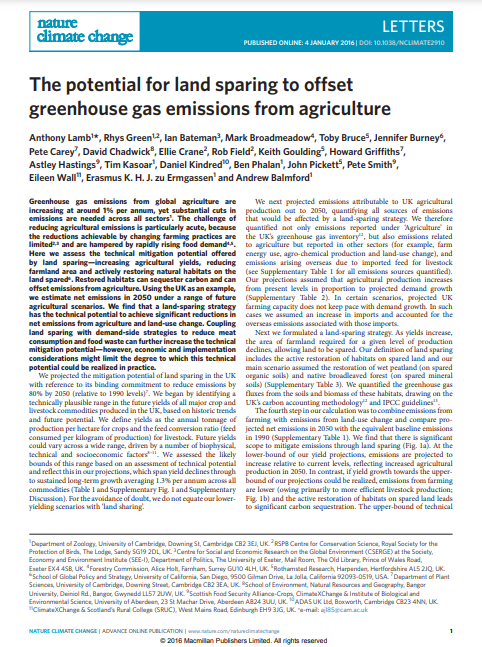The potential for land sparing to offset greenhouse gas emissions from agriculture

Scientific paper in Nature Climate Change in 2016 by Antony Lamb, Andrew Balmford & Colleagues on the potential for yield increases to spare land to mitigate climate change in the UK.
Lamb, A., Green, R., Bateman, I. et al. The potential for land sparing to offset greenhouse gas emissions from agriculture. Nature Clim Change 6, 488–492 (2016). https://doi.org/10.1038/nclimate2910
Abstract:
Greenhouse gas emissions from global agriculture are increasing at around 1% per annum, yet substantial cuts in emissions are needed across all sectors. The challenge of reducing agricultural emissions is particularly acute, because the reductions achievable by changing farming practices are limited and are hampered by rapidly rising food demand. Here we assess the technical mitigation potential offered by land sparing—increasing agricultural yields, reducing farmland area and actively restoring natural habitats on the land spared. Restored habitats can sequester carbon and can offset emissions from agriculture. Using the UK as an example, we estimate net emissions in 2050 under a range of future agricultural scenarios. We find that a land-sparing strategy has the technical potential to achieve significant reductions in net emissions from agriculture and land-use change. Coupling land sparing with demand-side strategies to reduce meat consumption and food waste can further increase the technical mitigation potential—however, economic and implementation considerations might limit the degree to which this technical potential could be realized in practice.



